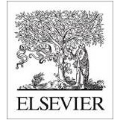Heat-based cancer treatment, so-called hyperthermia, can be used to destroy tumour cells directly or to make them more susceptible to chemotherapy or radiation therapy. To apply heat locally, iron oxide nanoparticles are injected into the bloodstream and accumulate at the tumour site, where they generate heat when exposed to an alternating magnetic field. However, the temperature must be precisely controlled to achieve therapeutic benefits while avoiding damage to healthy tissue. We therefore present a computational model for nanoparticle-mediated hyperthermia treatment fully integrated into a multiphase porous-media model of the tumour and its microenvironment. We study how the temperature depends on the amount of nanoparticles accumulated in the tumour area and the specific absorption rate of the nanoparticles. Our results show that host tissue surrounding the tumour is also exposed to considerable doses of heat due to the high thermal conductivity of the tissue, which may cause pain or even unnecessary irreversible damage. Further, we include a lumped and a discrete model for the cooling effect of blood perfusion. Using a discrete model of a realistic microvasculature reveals that the small capillaries do not have a significant cooling effect during hyperthermia treatment and that the commonly used lumped model based on Pennes' bioheat equation overestimates the effect: within the specific conditions analysed, the difference between lumped and discrete approaches is approximatively 0.75{\deg}C, which could influence the therapeutic intervention outcome. Such a comprehensive computational model, as presented here, can provide insights into the optimal treatment parameters for nanoparticle-mediated hyperthermia and can be used to design more efficient treatment strategies.
翻译:暂无翻译



